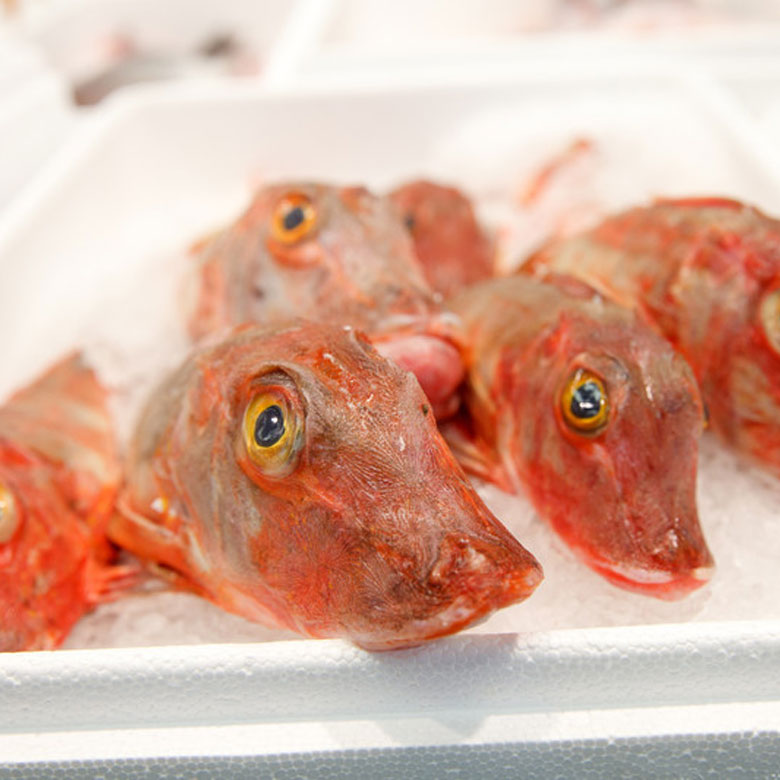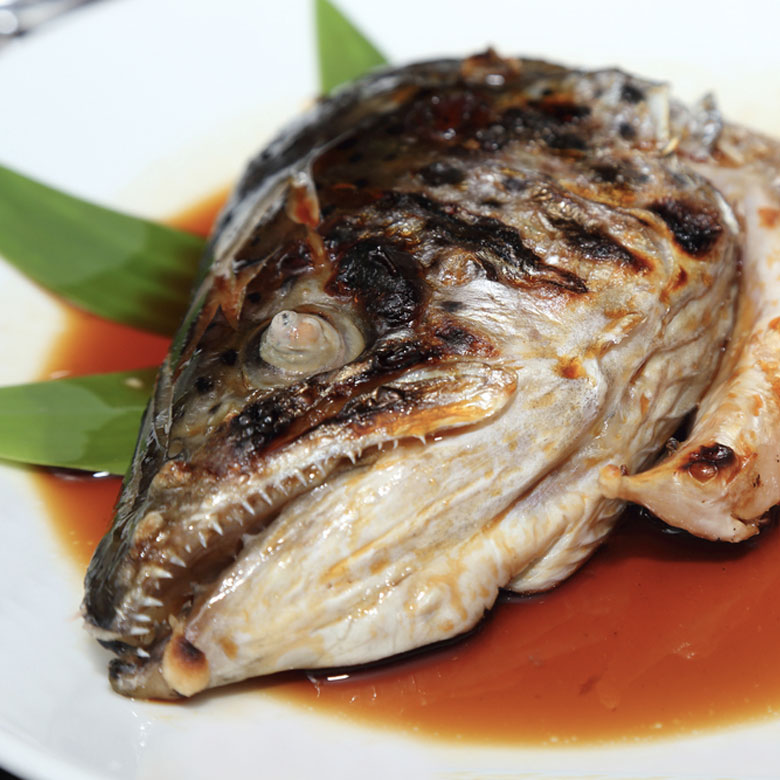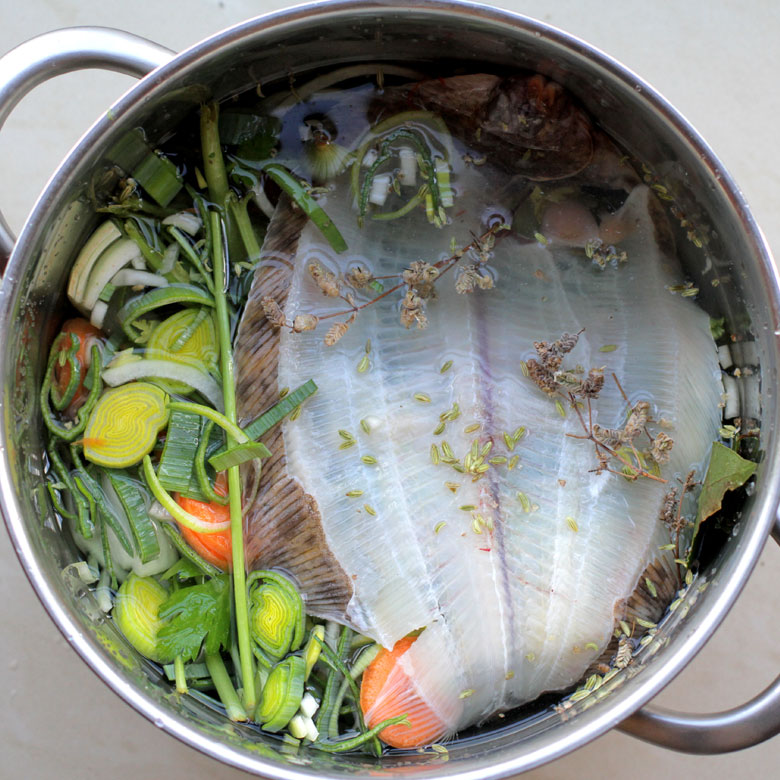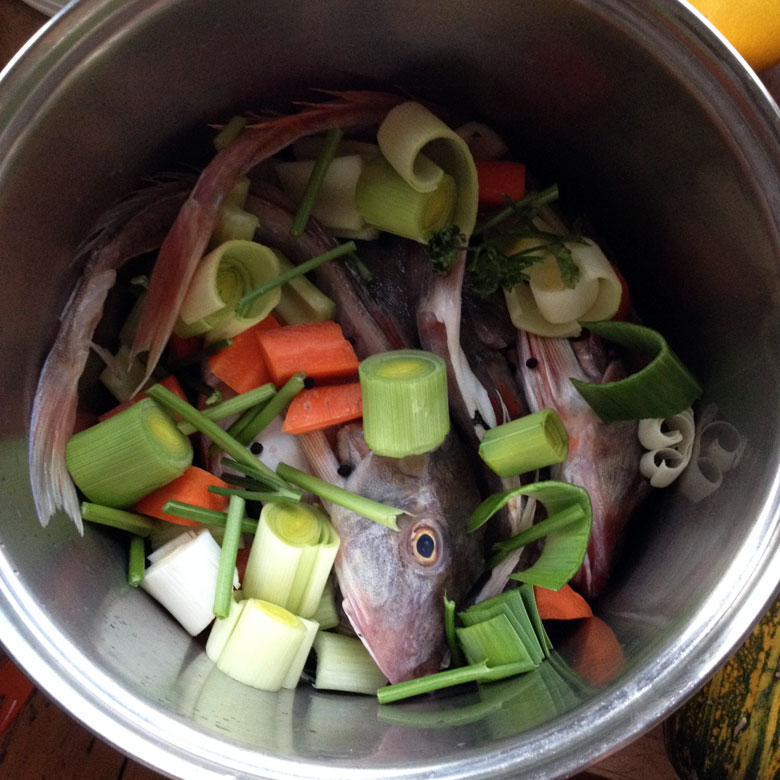Use your head
As Hugh Fearnley-Whittingstall wages his “war on waste”, Rachel Walker looks at how often-discarded fish heads and other trimmings can be transformed into a delicious stock.
“Would you like the head?” the fishmonger asks as he fillets a gurnard for me. Absolutely. As someone who loves value for money and hates food waste, taking the fish head home is a no-brainer.

It’s the end of the day, though, and the box of discarded fish heads under the workbench is overflowing. The truth is we’re a nation that prefers neat fillets to something that’s going to stare back at us from the plate. So every day flavoursome and nutrient-rich fish heads are chucked. “If we’re filleting 100kg of cod, nearly 50kg of heads, guts and bones end up going to landfill,” explains Sonny Elliot from Hastings’ Rock-A-Nore Fisheries.

What a waste! Remember that when you buy a whole fish, you’re paying for the head too. That’s a big percentage: we’re not dealing with a tiny chicken-sized head perched atop of a scrawny neck. A cod’s head accounts for more than 20% of the total weight – one fifth of the cost that often ends up in the fishmonger’s bin.
Other cultures aren’t so squeamish. Eating fish heads is part of the tradition of Rosh Hashanah, Jewish new year. The Japanese simmer, steam or roast them. Fish-head soup is a national dish in Spain and fish-head curry is a Singaporean classic. While the Yup’ik people in the wilds of Alaska and Siberia ferment fish heads in barrels buried in the hard earth, turning them into a delicacy known as tepa.
British cooks are generally less enthusiastic. Sardine heads play a purely ornamental role in Cornwall’s stargazy pie. Then there’s the dreaded Hebridean dish, crappit heid, which is as unappetising as it sounds (and indeed looks): fish heads are stuffed with oats, suet, onion and pepper, then boiled in seawater. Its roots have been traced back to 18th-century coastal communities round Caithness, where it was cooked by poor fishing families who sold the best cuts, “making do” with the leftovers.
But perhaps we’re beginning to see the light. Far from looking stingy, there is a buzz – an admiration even – around resourceful cooking. Hugh Fearnley-Whittingstall’s recent television series, Hugh’s War On Waste, reminded us that one third of food in Britain never gets eaten. Misshapen vegetables are chucked, ingredients nearing the “best before” date are binned, and leftovers are rejected rather than recycled.
The “nose to tail” eating concept championed by Fergus Henderson and many other chefs has already overhauled the way we view meat, rehabilitating liver, kidneys, trotter and tongue. “Root to Shoot” eating is gaining momentum too, such as using carrot tops in pesto and watermelon rinds in chutney. So why not fish?
A great place to start is with the cheeks: cod, monkfish and skate all yield really tasty chunks of firm meat that are traditionally seen as offcuts and so are often cheap as chips. They can be cooked in all kinds of ways, notably as a low cost alternative to scallops.
But perhaps the best way to tackle the whole thing – and indeed the entire skeleton – is to transform it into a stock. It’s a great way to capture the otherwise lost flavour and nutrients, while still distancing the end product from its ingredients: stock has no bones; no eyeballs.

Fish stock is a terrific thing to have to hand in the kitchen, providing a superb base for soups, stews, chowders, paellas, risottos and more. And don’t feel restricted only to seafood dishes: a robust fish stock will make a delicious base for a pea soup or a miso broth, for example, and lots of Asian dishes too.
Fish stock is expensive to buy – it often hits supermarket shelves round the £2.50 mark for a half-litre – and never as good as home-made. The vital ingredients are often free and, unlike meat stocks, it only takes half an hour to make. Cook up a big batch, allow to cool, transfer to ice trays and stick in the freezer for the best stock cubes in town, whenever you need them.
Fish stock
Makes 1 litre

Ingredients
- 20g butter
- 1 small onion, sliced
- 2 celery sticks, sliced
- 1 large carrot, sliced
- 1 leek, sliced
- 500g-2kg fish trimmings, rinsed in cold water
- 250ml white wine (optional, but preferable)
- 1.5 litres of water
- 1 teaspoon of black or white peppercorns
- 2 bay leaves
- Sprigs of tarragon (or other aromatic herbs)
Method
- Melt the butter in a large pan, and then sauté the onion, celery, carrot and leek for 5-10 minutes, until they start to soften.
- Add the fish trimmings to the pan and cook for another 5 minutes.
- If using white wine, deglaze the pan and cook until it’s almost dry, and then add the water.
- Simmer for 25-30 minutes, and then strain the stock through a chinois or a fine sieve.
- Cool, chill and use within 3 days, or freeze.
Stock tips
1. Be picky
Chefs will choose a white fish for stock over an oily fish such as salmon, mackerel or herring, which are too powerful. Nathan Outlaw recommends turbot, brill or sole, while Rick Stein recommends plaice. We reckon gurnard is pretty good too. Take heed of Hugh Fearnley-Whittingstall’s “golden rule”: “All the fish trimmings must be scrupulously fresh (or fresh when they were frozen). A fish that only just passes the ‘sniff test’ might have fillets that are just about worthy of the frying pan, but its bones will not be worthy of the stock pot.” Gills and guts can turn a stock bitter, so remove them and instead, focus on the fish heads, tail, skin and bones which are the best trimmings.
2. Get the veg right
Cut the vegetables into a small dice, so that as much flavour as possible can be extracted during the short cooking time. Hugh Fearnley-Whittingstall goes as far as suggesting grating or shredding the vegetables. Most recipes feature the usual suspects: onion, celery, carrots, leeks, a couple of bayleaves. Interestingly, Rick Stein adds button mushrooms to his fish stock recipe, while other additions might range from a sliced fennel bulb to a couple of bruised garlic cloves.
3. Timing is everything
Neither fish head nor bones need the same temperature or length of cooking as meat stocks. Most recipes suggest that the ingredients cook at a gentle simmer for 25-35 minutes, but there are a few variations. Steve Pini, executive chef for the Fishmongers’ Company, roasts the onion, celery and carrot before adding the fish trimmings and water. For his “roasted fish stock”, Mitch Tonks takes the radical route of blasting his fish trimmings in a hot oven for 30 minutes before transferring them to the stockpot.
Any more than half an hour or so at a gentle simmer and a fish stock will be in danger of turning bitter, or developing a chalky flavour as the calcium salts in the bones start to dissolve. If the stock is not as strongly flavoured as you’d hoped, then remove the head and bones, and reduce the strained stock to concentrate the flavour.





